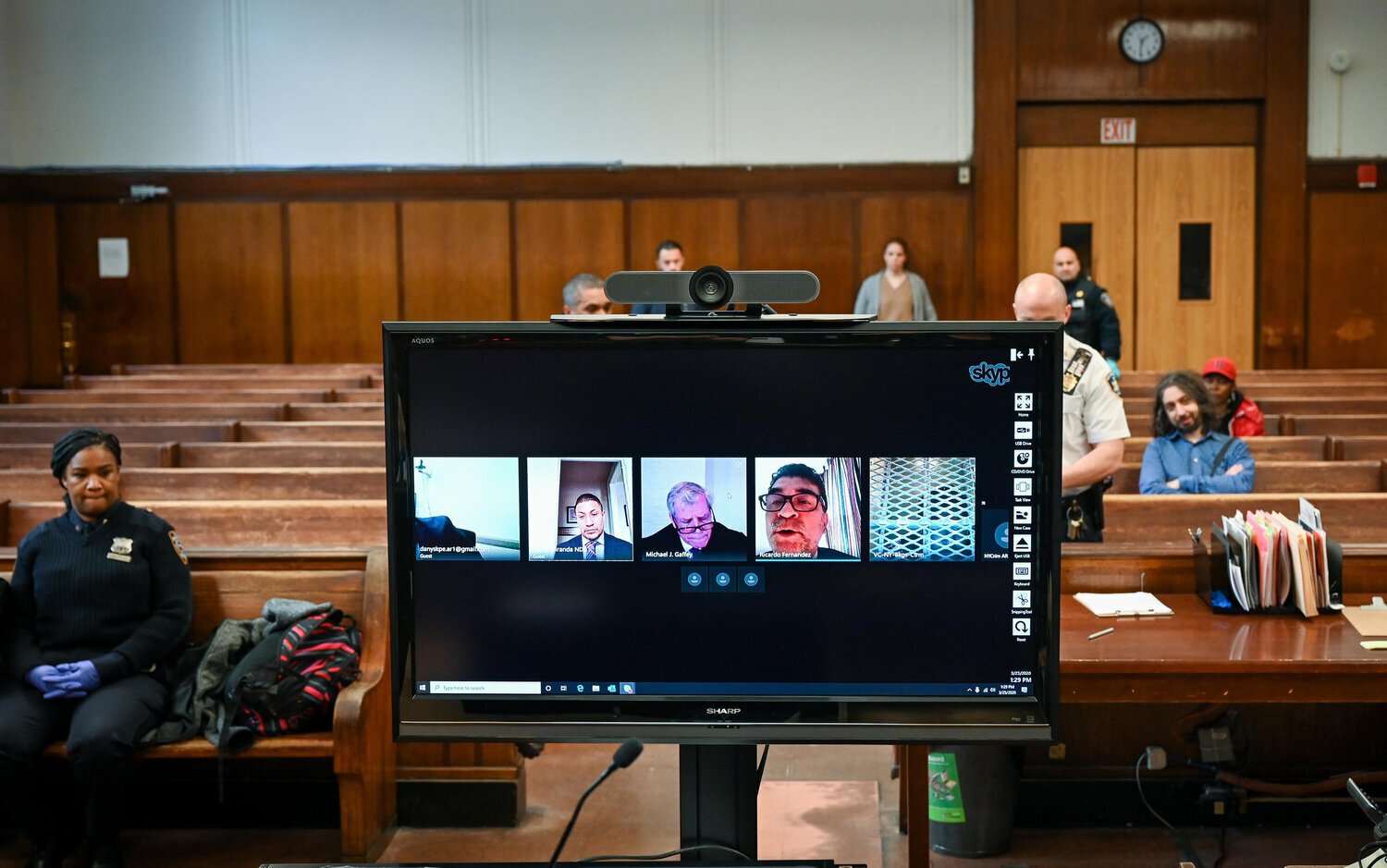Live from New York, it’s a trial!
/A new bill making its way through the State Senate would require New York’s trial courts to livestream and archive court proceedings. Photo courtesy of OCA
By Jacob Kaye
A new bill that aims to bring transparency to court proceedings throughout New York State passed the State Senate’s Judiciary Committee this week.
The bill, introduced by Manhattan State Senator Brad Hoylman, would require that the Office of Court Administration broadcast and archive most trial court proceedings and offer them free of charge to the public and press.
Hoylman’s bill passed the Judiciary Committee with 11 votes in favor and none against on Monday, March 14.
The COVID-19 pandemic forced the OCA to push its courts into the 21st Century – courtrooms across the state were outfitted with cameras, microphones and other broadcasting tech as a number of proceedings moved online and as social distancing guidelines needed to be met.
But a representative for Hoylman told the Eagle that the bill is less about codifying the technological advancements made in the courts in the past two years, as much as it’s about opening the judicial system to the public and the media.
“This predates the pandemic, and it's more about transparency,” said Kenan Kurt, Hoylman’s chief of staff and legal counsel.
“That being said, we've seen that the courts have the ability to adapt with current technology,” he added.
The current judicial laws dictating audio and visual coverage of a trial in New York State were last updated in 1997.
Under current law, much of the decisions about who and what can be broadcast by the media is left to the judge presiding over the trial. The audio and visual equipment is to be provided by the outlet granted permission to record the proceedings. Most importantly, the OCA is not required to livestream proceedings.
That would change under Hoylman’s bill, which includes a section that would require that the chief administrative judge create a uniform program throughout the court system to livestream proceedings.
The bill would require that cameras be installed in every Supreme, County City and Appellate courtroom throughout New York within six months of the bill’s effective date, and that live proceedings be made available on a public website for free.
Eighteen months after the bill becomes effective, the OCA would be required to install cameras in Family, Town and Village courtrooms.
Some restrictions will remain – members of the media will still need to get clearance from the judge presiding over the trial in order to film and capture audio and several procedures will be off limits, including counsel conferences.
This is the fourth time the bill has been introduced. Hoylman introduced the bill in the Senate in 2019 and Queens Assemblymember David Weprin introduced the bill in the Assembly in 2019 and 2018. All three died in committee.
OCA spokesperson Lucian Chalfen said that court officials likely would support the passage of the bill.
"While we haven’t fully digested this most recent proposal, historically, we have been supportive of cameras in the court,” Chalfen told the Eagle.
For some courthouses, integrating audio and video tech into the courtroom won’t be too much of a challenge.
Around 10 courtrooms inside the Queens Criminal Courthouse have already been outfitted with several large television screens, microphones and cameras locked in on the judge, defense and prosecution.
The tech was installed to ensure that all court participants could see each other while social distance guidelines are being enforced.
“A very significant silver lining for the courts, and society at large, was that the pandemic compelled us to really focus on the technology capacities that we have, and make sure that we were maximizing the use,” George Grasso, the administrative judge for Queens Supreme Court, Criminal Term, told the Eagle in February.
“There are a lot of things that hadn't been in place before the pandemic that will remain in place, subsequent to a point where we have no more requirements of either social distancing or masks, that will make our operations more effective, more efficient and serve the interests of justice,” Grasso added.
A previous version of the Hoylman bill would have created a pilot broadcasting program. In it’s current version, it calls for a permanent program because the lawmaker feels the technological advancements made in the courts make it possible.
“This instead just creates a permanent program because we've seen that we believe it is technologically possible,” Kurt said.
Kurt added that the need for New York to enact legislation that would require courtroom broadcasts has become all the more apparent in recent years, as several high profile trials in states throughout the U.S. have been broadcast throughout the country.
The trials of Derek Chauvin, the former police officer who was found guilty of murdering George Floyd in Minnesota, and of Kyle Rittenhouse, the teen who was found not guilty of shooting two men in Wisconsin, were just two of a handful of recent trials carried on television networks throughout the U.S., which Kurt says is in the public interest.
“We've seen several trials just in the last few years of high profile cases that have drawn national interest and there's been a real public benefit to having video of those trials,” Kurt said. “If those tragic incidents had happened in New York and it was a state trial case, we would have no video evidence of what happened in those trials.”




